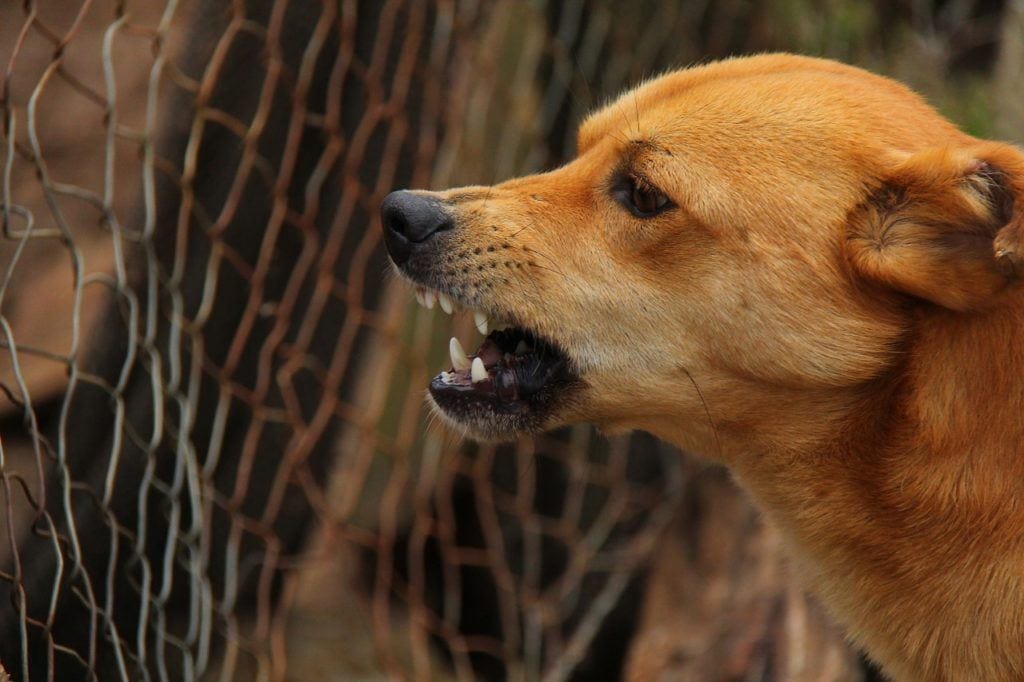
When you think of rabies, do you think of foaming at the mouth and the look of anger in that animal’s eyes? Many do, and while that can happen, it isn’t the only sign of the disease.
Rabies is a devastating viral disease that affects mammals, including dogs and humans. Knowing how to prevent transmission, what the symptoms are, and making sure your dog is vaccinated will help prevent them from getting this disease. Rabies is fatal if not caught before signs are shown.
As of now, the rabies virus is only found in North America, Central, and South America, Asia, Africa, the Middle East, and some parts of Europe. There are many places that are rabies-free, and the vaccine makes sure that any animals coming in and out of the countries stay that way.
Let’s look into what you can do to prevent your pooch from contracting this disease.
Rabies Vaccination
By far the easiest way to prevent your pet from catching this viral disease is the vaccination. In many states, it is required by law for your pet to be vaccinated. Why? Well, it helps not only to protect your dog from catching the disease but also to protect your dog in case of an accidental bite.
The first question that you will be asked if your dog bites someone is, “Are they vaccinated?” and “What are the vaccination records of your dog?” Having your pet up to date on their vaccinations will keep them safe in both the eyes of the law and in good health. Dogs who bite people must spend at least 10 days in quarantine to make sure rabies doesn’t develop just in case, though.
Much like the flu shot for humans, your dog needs one each year. This keeps the antibodies formed and your dog could easily fight off the disease if they were to come in contact with an animal that has it.
All dogs and cats typically are required to get their first vaccine between 12 and 16 weeks old. Your vet will provide you with more information on when your pet can safely get the vaccine.

Signs of Rabies in Dogs
If your dog has been bitten by a rabid animal, the disease will progress in two stages. Typically, the signs will start anywhere between 21 to 80 days post-exposure. If after 80 days your dog shows no signs, then it is determined that your pet didn’t contract rabies at all. It is always best to contact your vet as soon as a bite happens, as a booster to the rabies vaccine can lessen the chances your dog contracts rabies.
Let’s look at each stage and what it could look like for your dog if they do start to show signs.
Prodromal Phase
This is the first stage of rabies. Your dog would undergo a marked change in temperament that won’t be easily missed. Quiet, more reserved dogs can become agitated easily, they are loud, and they are overall not the same dog you know. More active pets can come nervous or even shy. In most cases, a dog will become restless and cannot get comfortable. You’ll know something is wrong if your dog does a flip of personality.
This stage can last 2–3 days. A fever may also be present at this stage.
Second Stage of Rabies

This is where rabies can differ. There are two clinical forms of the disease. They each show differently, and only one has the “foaming” at the mouth aspect. Here are the two different forms:
Furious Rabies:
Furious rabies is when a rabid dog becomes aggressive, develops a depraved appetite, and starts eating stones, earth, rubbish, and anything it can get into its mouth. Eventually, paralysis sets in, and the rabid animal may be unable to eat and drink. It would be in this stage hydrophobia would set in for humans, but dogs don’t share that fear. Once at this stage, the dog finally passes in a violent seizure.
Dumb Rabies:
This form is more common in dogs. In this form, the dog starts to have progressive paralysis in the limbs, distortion of the face, and difficulty swallowing. It is common for owners to think there is something stuck in their mouth or throat. Unlike furious rabies, the dog eventually becomes comatose and passes.
How Is Rabies Transmitted?
There is only one common way that the infection is transmitted. That is through saliva. Transmission through other ways is very rare, and you won’t have to worry about that. Typically, the infection is spread when an infected animal bites another animal or person. Another way to contract it is if an open wound is exposed to the infected saliva of an animal.
In America, the animals that spread the infection are the skunk, fox, raccoon, coyote, and bat. They are the carriers for infection, and the opossum can carry rabies but often don’t. In Europe, the primary cause of rabies is foxes. In Asia, Africa, and Latin America, the main source of infection is stray dogs.
After the bite occurs, the rabies virus enters the peripheral nerves. These are the nerves that are outside the brain and the spinal cord. Once it is in the nerves, it spreads to the salivary glands. Once the virus is in the saliva, it is shed as the animal drools. The virus can’t survive long outside the mammal’s body.
How Is Rabies Diagnosed?
Rabies isn’t easily diagnosed by blood tests. The only way to be 100% sure that an animal was infected is to take a biopsy of the brain tissue. Since the rabies vaccine attacks the brain, it makes sense that it would show in the brain. Sadly, this means that the only way to know for sure is to have the animal pass away.
Once signs of rabies appear, there is no way to treat the disease. If it is suspected your dog has rabies, your dog may be euthanized. Compared to how the stages could go, peaceful death is far better than letting the virus take them.
Conclusion
Preventing rabies is easy, all it takes is a vaccination for your pet. It is 100% the best way you can keep your pet safe in the long run. This virus is tragic, and it destroys animals from the inside out. There is no cure but there are preventative measures. Talk to your vet about getting on a schedule for the vaccine and what to do if you encounter rabid animals in the wild.
See Also:
- Do Raccoons Attack and Eat Dogs?
- Tetanus in Dogs: Signs and Management
- Common Infectious Diseases in Dogs
Featured Image Credit: simonocampo999, Pixabay







